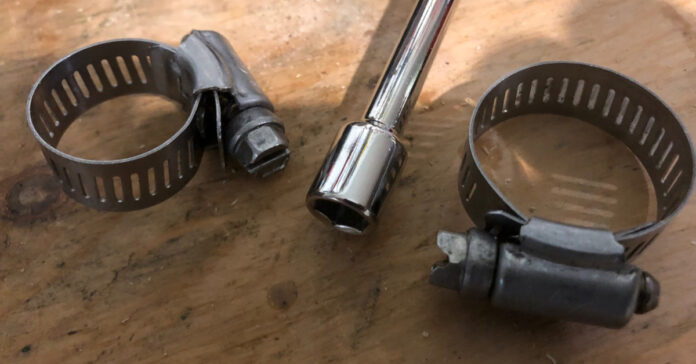At 1 p.m. yesterday, we ran out of water.
Our water usually gives us problems when the pipe bringing us water freezes. But it was a shock this time because it was close to 50°F. The temperatures hadn’t been below freezing for several days and nights.
Making matters worse, we had a house full of Thanksgiving visitors.
So I threw on my boots, put on my hat, added some pipe-repair supplies into my daypack, grabbed the dog and my hiking stick, and headed up the mountain. Unlike most of my winter pipe-repair excursions, it was neither snowy nor foggy.
I am happy to report that I made it to the water tank in record time and didn’t have to stop and catch my breath. The dog walks and hikes with a backpack are paying off.
I could immediately tell the tank was empty and the pipe running to it had no water in it. This meant the problem was between the storage tank and the spring, which is what I had expected. My guess was an animal had once again chewed through the pipe, as had happened once before. It was also possible that the pipe had frozen and split open. This had also happened previously.
So I hiked up the hill, stopping every 10 feet to lift the black polyethylene pipe and see if there was any water dribbling out of it. The pipe was light, meaning it was empty. There was no water in it, but neither was there ice.
A couple hundred feet above the tank, I picked up the pipe and water came gurgling out. The pipe had been neither bitten nor frozen, but one of my earlier splices had pulled open. Perhaps a side effect of the prior freezing temperatures.
A Bad Splice
At some point last winter or the one prior, I had cut out a section of damaged pipe and repaired the hole with a plastic connector and a hose clamp on each side. I had either been short on equipment or in a hurry and as a result had not done a very thorough repair job. A proper splice requires two hose clamps on each side, for a total of four. It is also best to put them on in opposite directions so each tightening screw faces the opposite direction of the one it is next to.
I had the necessary equipment to make a better repair in the pack: eight hose clamps, a socket screwdriver designed to turn the screws on the clamp, and a propane torch. I tied the dog to a tree and proceeded to carefully heat the black pipe with the propane torch. This expands the pipe and allows it to fit over the connector, something that is otherwise impossible in cold weather. It’s a job properly done with three hands, but I did it by clamping one end of the pipe between my knees and using great care not to burn anything important with the torch as I fitted the pipe to the fitting.
I finished repairing the splice in just moments. Each side now had two hose clamps on it, and they were facing the correct direction. I hiked the rest of the way up the mountain, just to make sure no other sections had worked their way loose. I checked each splice and tightened every hose clamp I came across. Some of them were looser than I liked.
My phone said I had climbed 40 flights of stairs and walked 1.9 miles.
Preventative Maintenance
While this shows the importance of having the parts on hand to repair your critical infrastructure, it also shows the importance of preventative maintenance. In hindsight, I should have checked the pipe after our last big cold spell. If I’d done so, I might have spotted the weak spot or the leak before we used up a tank full of water. Now the tank has to refill.
The water flows at about one gallon every 90 seconds, which works out to 40 gallons an hour. If we are adding only 40 gallons of water to the tank per hour, we should have 800 gallons in 20 hours, or by 9 a.m. Of course, we’re using water during those 20 hours, meaning less water collects in the tank because we are flushing toilets, doing the dishes, taking showers, etc. But I expect the tank will be full by tomorrow morning, even though we have company and are using twice as much water as normal. I’ll hike up there Monday morning to check. If water is coming out of the overflow, I’ll know the tank is full.
Burying the Pipe
What’s ironic is we’ve been waiting for the contractor we selected to come by and bury the pipe so it won’t freeze. We expected him to do the job in October, but had to push us back. Then he got COVID and missed ten days of work. Funny thing is, we expect him next week, although that might slip again. With any luck, this will be the last time I have to head up the mountain and repair a pipe. If not, I still have plenty of repair parts remaining.








